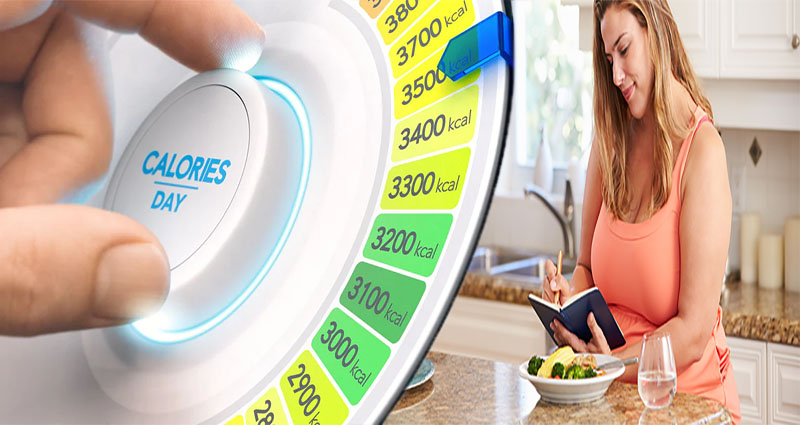When it comes to dieting, there are a lot of myths and old wives’ tales that get in the way of making good decisions. What’s worse is that some people will even tell you they’ve got the best solution for everyone, no matter what your body type or activity level. This article will explain how you can use science and math to determine just how many calories you need on a daily basis so that you can make an informed decision about what kind of diet will work best for you.
What are calories?
- Calories are a measure of energy. They tell you how much energy is in the food that you eat, which helps your body function and grow.
- The amount of calories in an apple is different from the amount of calories in an orange or an avocado–even though they all have approximately the same number of grams (or even ounces) per serving size!
How many calories do women need?
So how many calories do you need?
The answer depends on your age, height, weight and activity level. The average woman needs about 2200-2500 calories per day to maintain her weight. But if you’re over the age of 51 and have a BMI over 25 (which means that you are overweight), then your recommended daily intake will be higher than this.
Calorie requirements can vary considerably depending on how much sleep we get each night – studies show that people who sleep less tend to eat more food throughout the day. So if your aim is to lose weight or maintain it at a healthy level then getting enough rest every night is essential for keeping control over what goes into your mouth!
Factoring in activity level
Factoring in your activity level is important because it can affect how many calories you need. For example, a woman who weighs 130 pounds and is 5 feet 5 inches tall might need 2,000 calories per day if she’s sedentary (little or no exercise). However, if she exercises regularly (for example, by walking 30 minutes five times per week), her daily calorie needs would increase to 2,400.
In general:
- Sedentary women should eat 1 to 1 1/2 calories per pound of body weight each day
- Moderately active women should eat 1 1/2 to 2 1/2 calories per pound of body weight each day
Predicting your needs
It’s easy to figure out how many calories you need, but it’s also important to know that there are different guidelines for men and women. The following table shows the average calorie requirements for men and women, as well as children of different ages:
- Adult Female – 2000-2200 calories per day (depending on activity level)
- Adult Male – 3000-3400 calories per day (depending on activity level)
- Child 1-3 years old – 1200-1500 calories per day; 4-8 years old – 1600-1800; 9-13 years old – 1800-2000; 14+ years old – 2200+
Can you eat too few calories?
Yes, you can eat too few calories. But it’s not something that happens to people who have the willpower to stick with their diet plans.
If you’re trying to lose weight and are eating less than 1,200 calories per day (the recommended daily intake for women), then you might be in danger of consuming too few calories. The body needs a certain amount of energy each day just to function normally–this is called your basal metabolic rate (BMR). Your BMR varies depending on age, height, weight and gender; the higher these factors are above average levels for your demographic group (e.g., women ages 20-29), the higher your BMR will be as well because more energy is required for basic bodily functions like breathing and digestion at any given moment when compared against someone who has lower averages across those same characteristics
Is the timing of calories important?
It’s important to make sure you’re eating regularly throughout the day. If you skip meals or overeat at a meal, your body will go into starvation mode and start storing fat instead of burning it off. The best way to prevent this is by eating every 3-4 hours and making sure each meal is balanced with protein, carbs and fat.
In addition to timing your meals properly, it’s also important not only what kind of food you eat but how much–or more specifically: calories! You need enough calories so that your body has energy for daily activities like walking around town or working out in gym class; however too many calories can lead to weight gain which may lead down a dangerous path towards obesity-related conditions such as heart disease or diabetes mellitus type 2 (DM2).
Balancing what you eat with what you save.
It’s important to remember that the food you eat is just one part of the equation when it comes to losing weight. You have to burn more calories than you take in, which means balancing what you eat with how much physical activity you do.
Calories in vs. calories out is a simple formula–and one that works! The key is making sure that your daily intake of calories doesn’t exceed your expenditure through exercise or daily activities like walking around the office and washing dishes at home. If it does, then those extra calories will get stored as fat because they weren’t used up by any other process in the body (like burning fuel).
If this sounds complicated, don’t worry: there are plenty of tools available online that can help calculate how many calories are needed based on factors such as age and gender (and even height!).
There is no one diet that is best for all people.
There is no one diet that is best for all people. Instead, it’s important to find a diet that works for you and your needs.
If you are trying to lose weight, losing 1-2 pounds per week is recommended. If you want to gain weight or maintain your current weight, try eating 500 more calories than what your body needs each day (for women: 2 pounds per week).
If you have diabetes or insulin resistance (a precursor), then try reducing carbohydrates in order to lower blood sugar levels by 15-20%.
If you’re trying to lose weight, the best way to do it is by eating a healthy diet and exercising regularly. Don’t rely on fad diets or quick fixes as they will only cause more harm than good in the long run.








